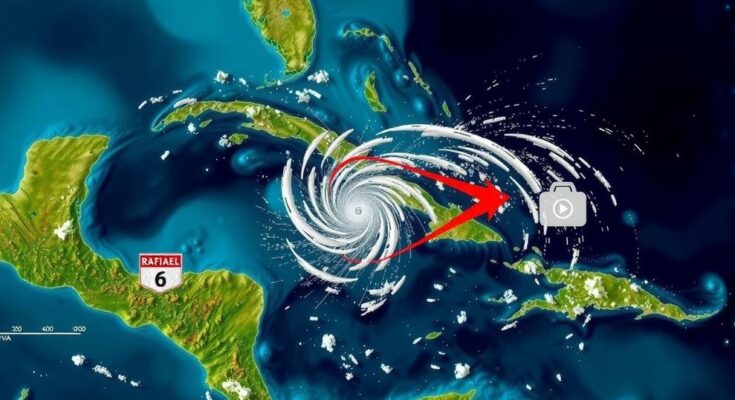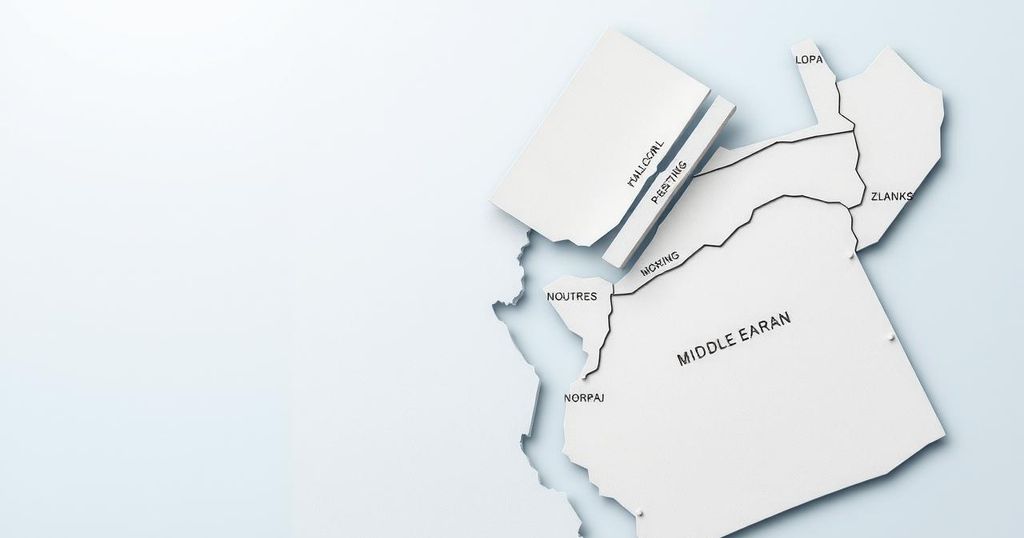Hurricane Rafael, a Category 2 storm, is moving west across the Gulf of Mexico and may weaken to a tropical storm by Sunday. The storm recently caused significant damage in Cuba, knocking out power and adding to the region’s challenges with previous hurricanes. Current conditions could lead to dangerous surf and rip currents in the Gulf.
Hurricane Rafael, currently categorized as a Category 2 storm, is set to traverse the Gulf of Mexico over the next several days. This route presents less favorable conditions compared to the Caribbean, with adverse factors such as significant wind shear, lower humidity, and cooler sea temperatures potentially leading to a weakening of the storm. According to forecasts from the National Hurricane Center, Rafael might downgrade to a tropical storm by the time it approaches Mexico on Sunday. As of the morning update on Thursday, officials have lifted the tropical storm warning for the Dry Tortugas, and there are no further watches or warnings in effect. Nevertheless, meteorologists cautioned that the storm could generate “life-threatening” surf and rip current conditions across the Gulf. On Wednesday, Hurricane Rafael struck western Cuba as a Category 3 hurricane, severely impacting the country’s already troubled electrical infrastructure. This incident follows the devastation caused by Hurricane Oscar earlier in October, which left eight fatalities and damaged approximately 20,000 homes in Cuba. The hurricane center has also diminished the likelihood of a new tropical disturbance forming north of Puerto Rico and Haiti, reporting a mere 20% chance of it developing into a tropical depression in the coming week. The subsequent name on the Atlantic hurricane list is Sara.
Hurricanes pose significant threats to coastal communities, particularly in the Caribbean and Gulf regions of the United States and Mexico. Hurricane Rafael, which has recently impacted Cuba, underscores the vulnerability of infrastructure and the unpredictability of hurricane paths. This season, storms such as Hurricane Oscar have already caused considerable damage, prompting concerns about the preparedness for subsequent weather events. Meteorologists constantly monitor storm developments and assess potential threats to ensure public safety and readiness.
In summary, Hurricane Rafael is expected to move west across the Gulf of Mexico, potentially weakening due to unfavorable environmental factors. The storm has recently impacted Cuba, disrupting power across the region, and caution persists regarding dangerous surf conditions. Moving forward, officials are continually updating forecasts to ensure that affected areas remain prepared for any changes in storm intensity or path.
Original Source: www.miamiherald.com




